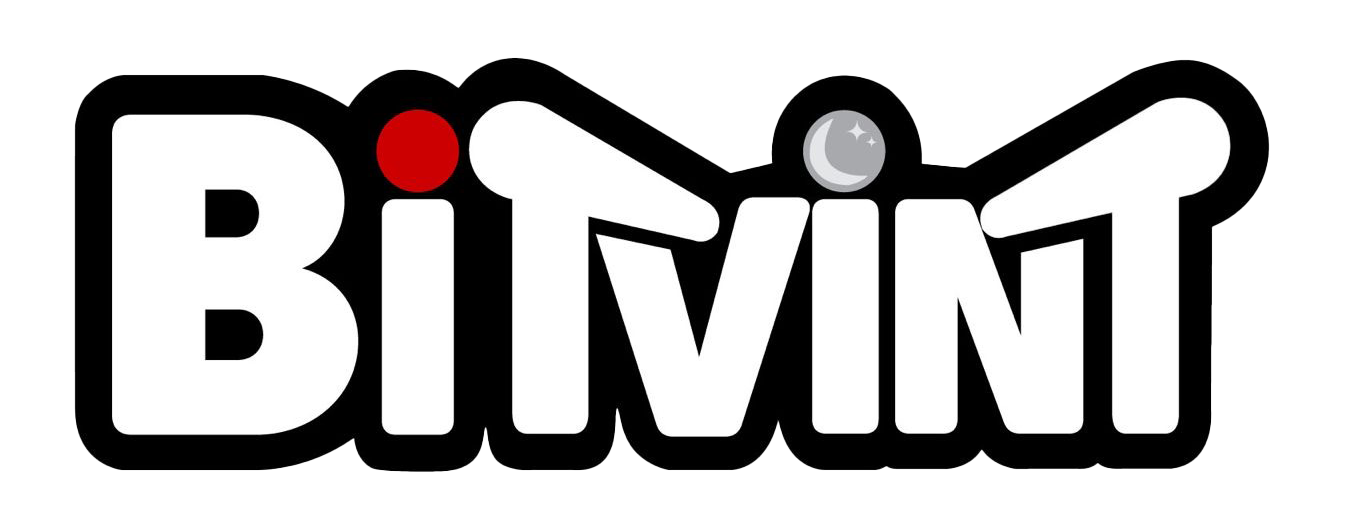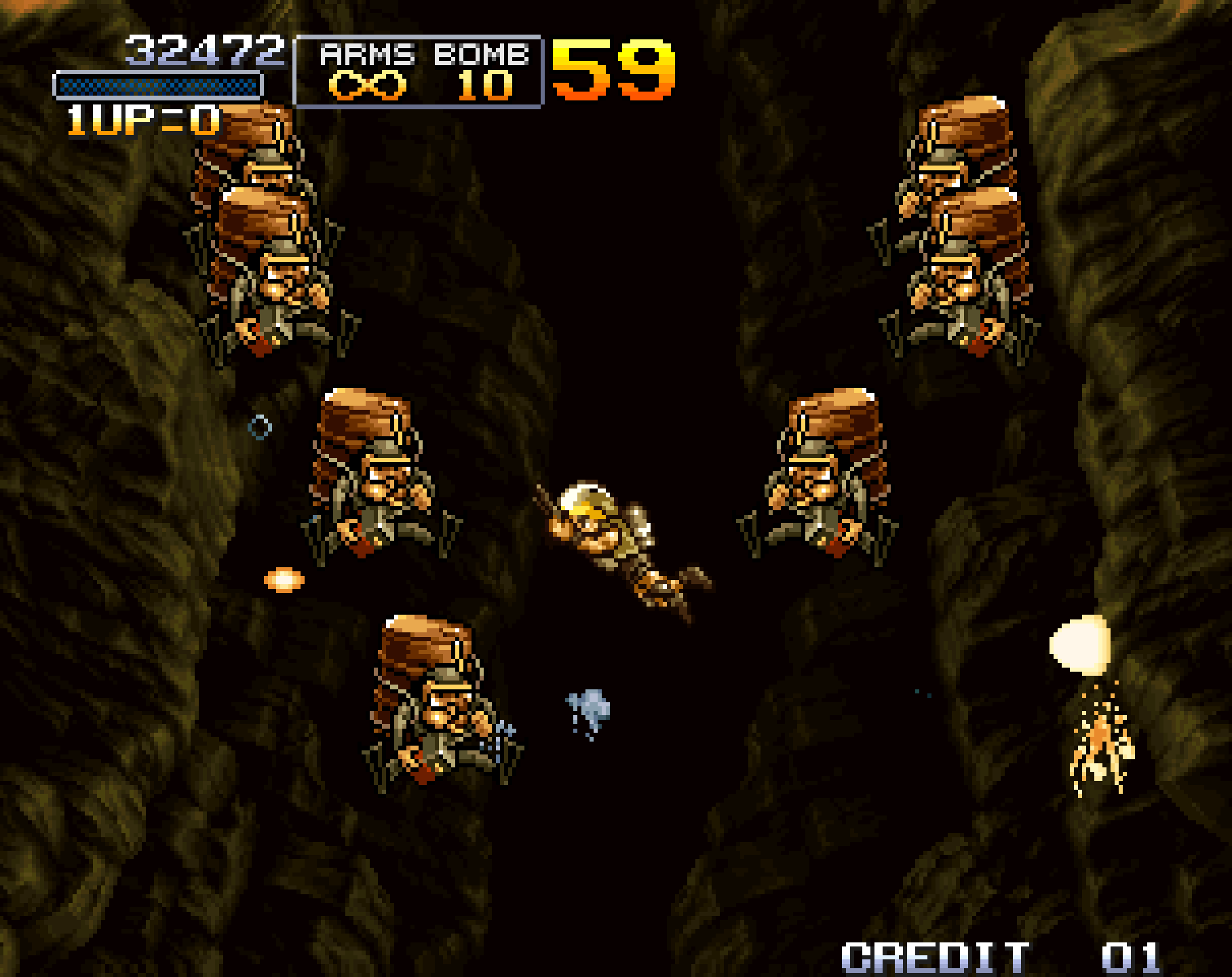Introduction
The Metal Slug franchise stands as one of arcade gaming's most cherished legacies. Renowned for its hand-crafted animation, chaotic action, and offbeat humor, the series has carved out a unique space in gaming history. But behind the pixel-perfect explosions and satirical warzones lies a story of remarkable creativity, perseverance, and reinvention. This is the complete story of Metal Slug – as told by the people who made it.
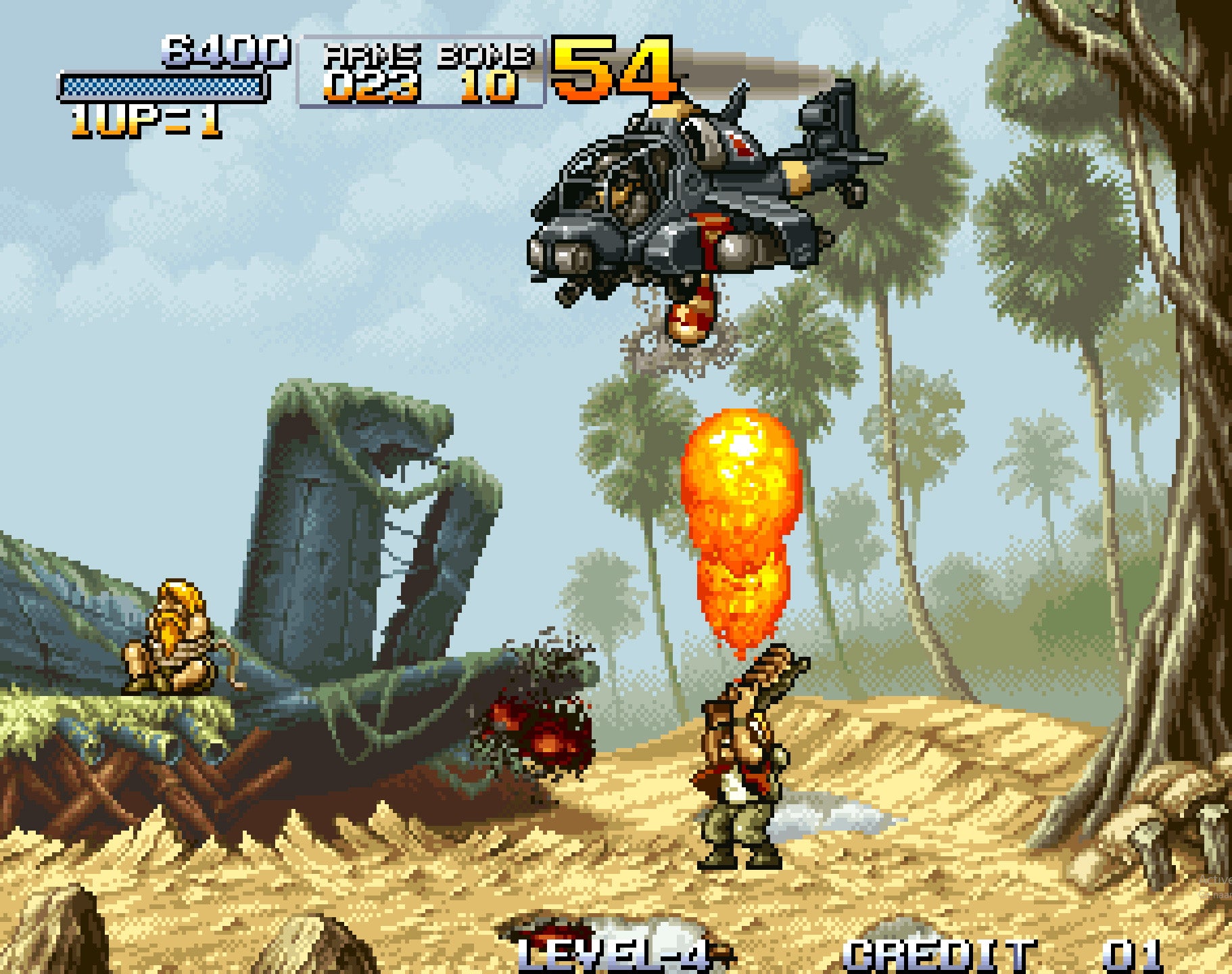
From Irem to Nazca: The Birth of a Team
The roots of Metal Slug go back to Irem, a company known in the 1980s and early '90s for titles like R-Type and Moon Patrol. But by 1994, Irem was in steep decline. Amid rumors that the company was planning to shut down its game division, developers began quietly planning their next steps.
"Groups of people started to form depending on where they were going next," remembered Kazuma Kujo, who had been working as a planner at Irem. "Some went to SEGA, Atlus, Hudson, etc., but one of the executive managers at SNK was a former Irem employee."
The result was a new studio, Nazca Corporation, founded with support from SNK and composed almost entirely of Irem veterans. Among them were Kujo (planning), Takushi Hiyamuta (sound/music), Meeher (stage design), and the legendary artist Akio. Their mission: create a 2D arcade shooter unlike any before.
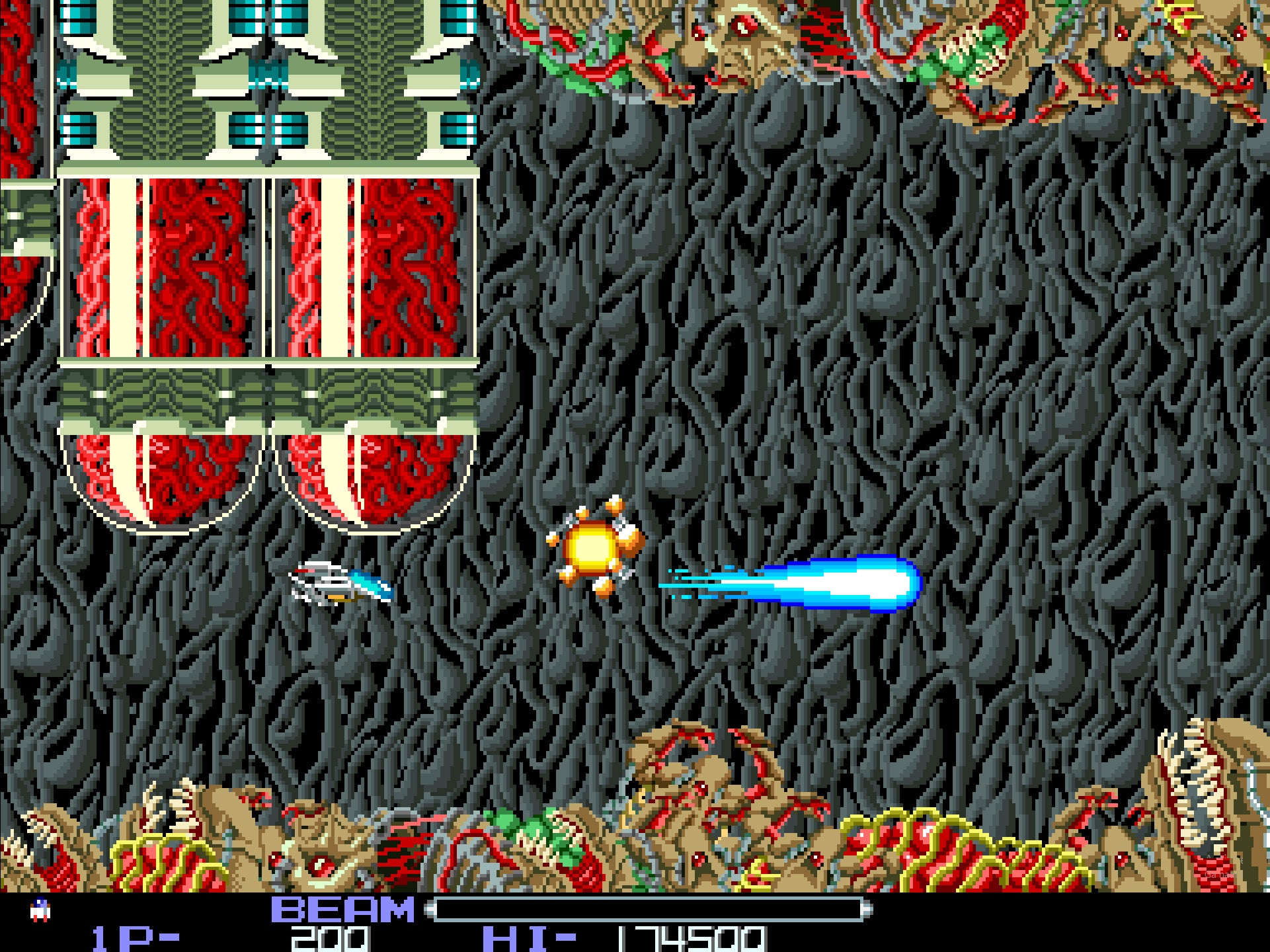
Designing the Original Metal Slug
The first Metal Slug, released in 1996, was conceived as a tank-based shooter. In early prototypes, players controlled a large armored vehicle called the "Super Vehicle-001" through side-scrolling stages. But location tests revealed a problem: "It was too bulky and awkward for an action/shooting game," said Kujo.
"Well, obviously the main character had to be recreated, from being a tank to a soldier," he explained. "We used the same backgrounds, but the objects and enemies within the level had to be adjusted to match the new character."
What emerged was a game that combined tight shooting mechanics, fluid hand-drawn animation, and a surprisingly rich sense of humor. Metal Slug's humor came not just from cutscenes, but from the gameplay itself: soldiers panicking, zombies vomiting, aliens dancing.
"I really wanted to make the characters speak," said composer and sound director Takushi Hiyamuta. "The game has narration that has nothing to do with the players. I wanted to send out messages from the game through characters’ speech."
The result was an arcade experience like no other.
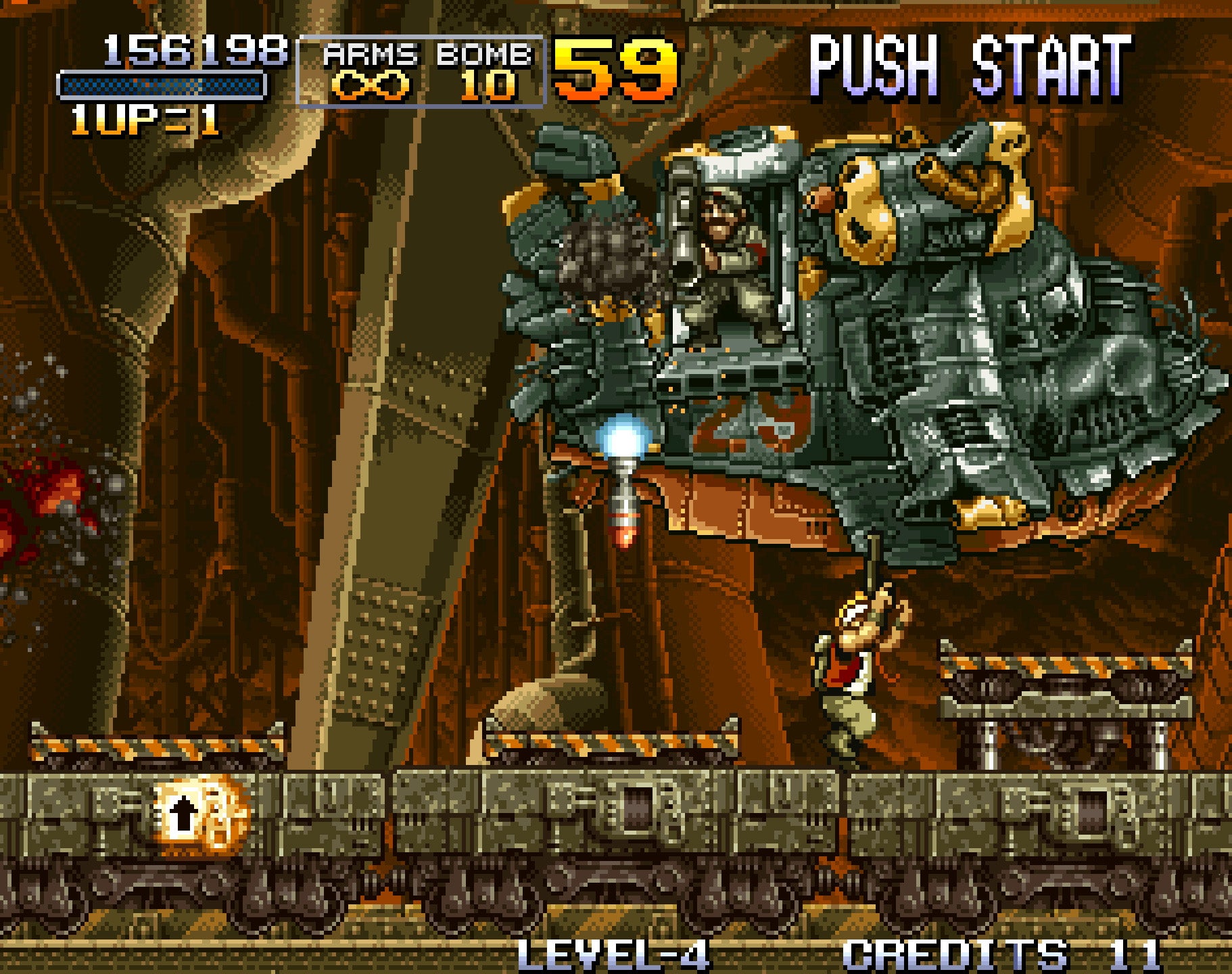
How a Team Worked in Tandem
Despite limited resources, the Nazca team was tight-knit and deeply collaborative. According to Kujo, stages were split between designers to avoid overlap: "We agreed it would be best to work in a way that wouldn’t overlap."
While Kujo and Meeher traded level design duties, artist Akio led the charge on animation. According to programmer Atsushi Kurooka, "The planners seemed really impressed at my ability to make things look more natural."
Kurooka also noted that many of Metal Slug's effects – falling debris, collapsing structures – were created manually: "There are empty spaces within the square pixels, so we would 'cut' them to minimize the bounding number of sprites required to move the character."
This handmade quality became the hallmark of the franchise.
The Sound of War
Hiyamuta, known as HIYA! in credits, composed Metal Slug's iconic soundtrack using minimal tools: "We didn't have instruments back in the day that sounded like computer game music, just a synthesizer," he said. He credits his inspiration to Thunderbirds and progressive rock like Emerson, Lake & Palmer.
"Arcade games only last a few minutes from the point when the player puts in the coin," Hiyamuta said. "You have to give the player everything you’ve got right from the start."
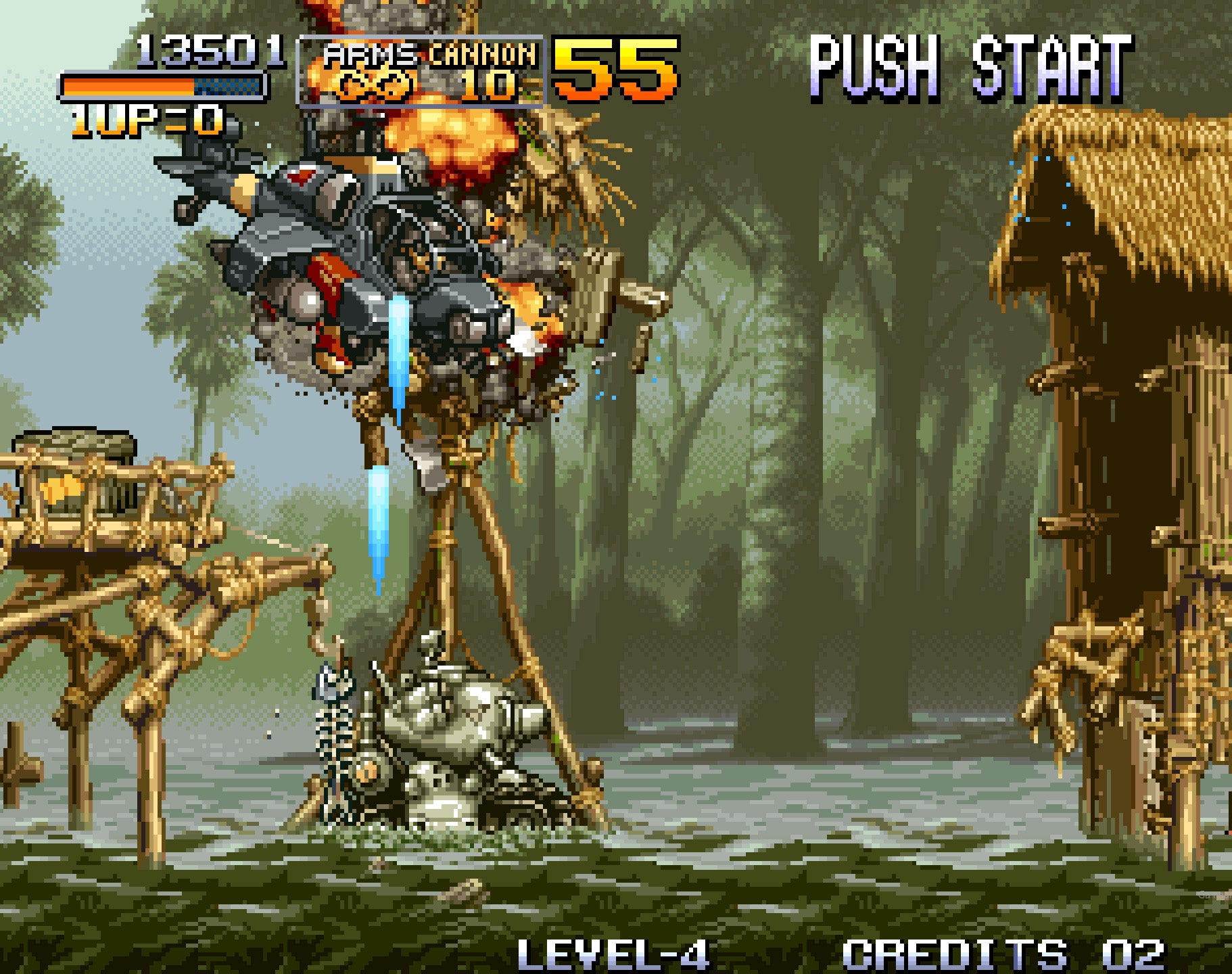
Metal Slug 2, X, and the Branching Glory of Metal Slug 3
After the success of the first Metal Slug, the team began work on Metal Slug 2. New characters, transformations (including the mummy state), and more chaotic action defined the sequel. But it suffered from one notorious flaw: slowdown.
"The truth is that we changed or improved many of the underlying systems for part two," said programmer Shinichi Hamada, who joined later. "I think the slowdown probably came from us being able to do a lot more."
To fix the slowdown and rebalance difficulty, SNK released Metal Slug X, which Kujo called "a tuning version" of 2. Then came Metal Slug 3, widely considered the peak of the series.
"Metal Slug 3 had taken the pure experience and vision of the original game and stretched it to its absolute maximum," the team recalled. With branching stage paths, outrageous new enemies, and the unforgettable final level that plays like a mini-movie, it was the culmination of the Nazca team's vision.
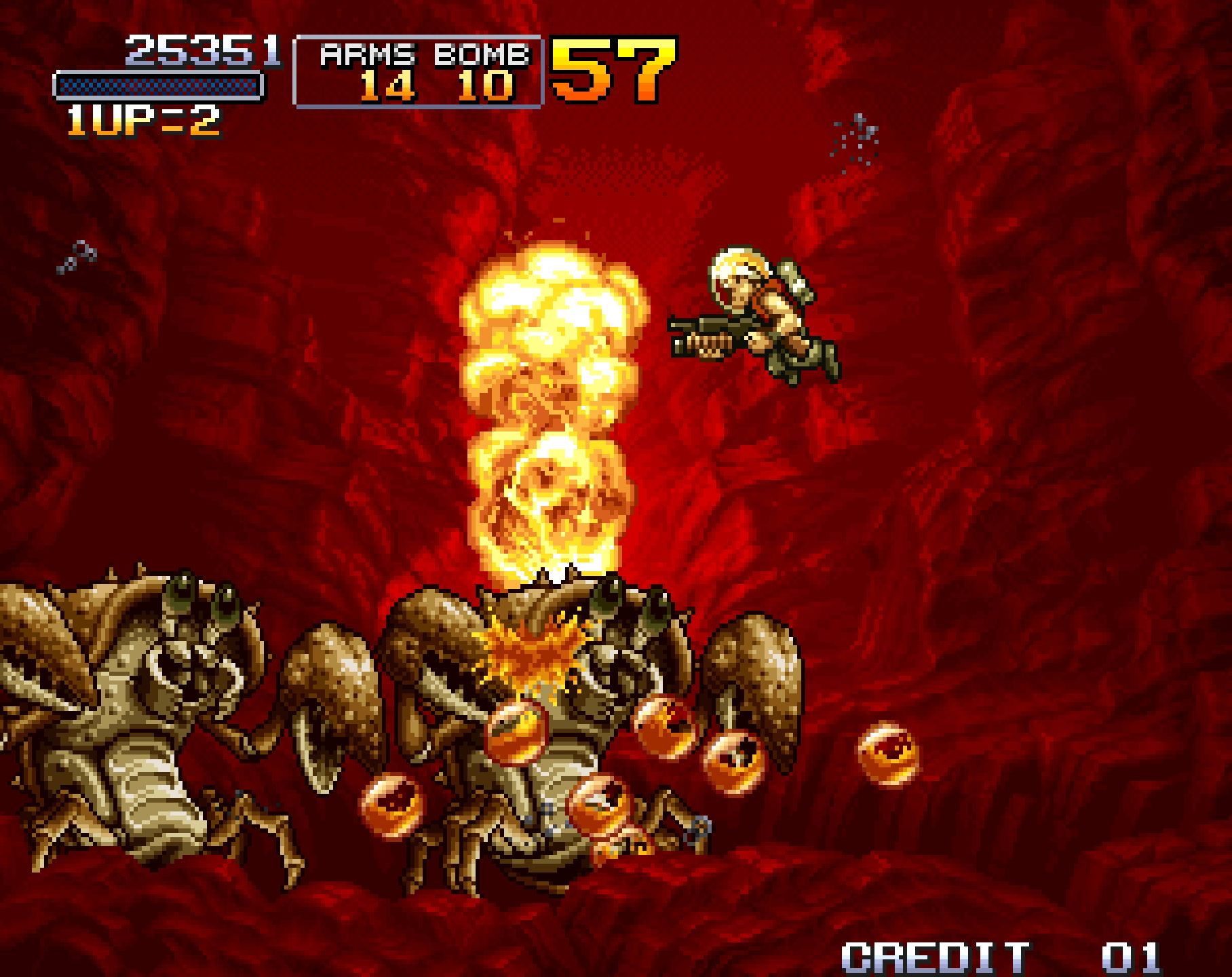
SNK's Bankruptcy and the Rise of Noise Factory
By the early 2000s, SNK was in trouble. After being acquired by pachinko manufacturer Aruze, the company began unraveling. Many of the original team members moved on or were laid off.
Hiyamuta reflected: "It was fun working at Nazca, but I was young... and I was really into black bass fishing at the time. So, I quit my job and spent all my time fishing. Even while working on Metal Slug, I spent all my free time fishing."
Taking up the torch for Metal Slug 4 and beyond was Hidenari Mamoto, working through developer Noise Factory.
"I was probably the most knowledgeable about Metal Slug because I had spent so many hours at the arcade playing it," Mamoto said. He would direct Metal Slug 5, Advance, and play a role in 6 and 7.
The budget was tighter. "I think it grew by about 10 million yen [from MS4 to MS5]," Mamoto explained. "But it was still a much smaller budget than the first three titles."
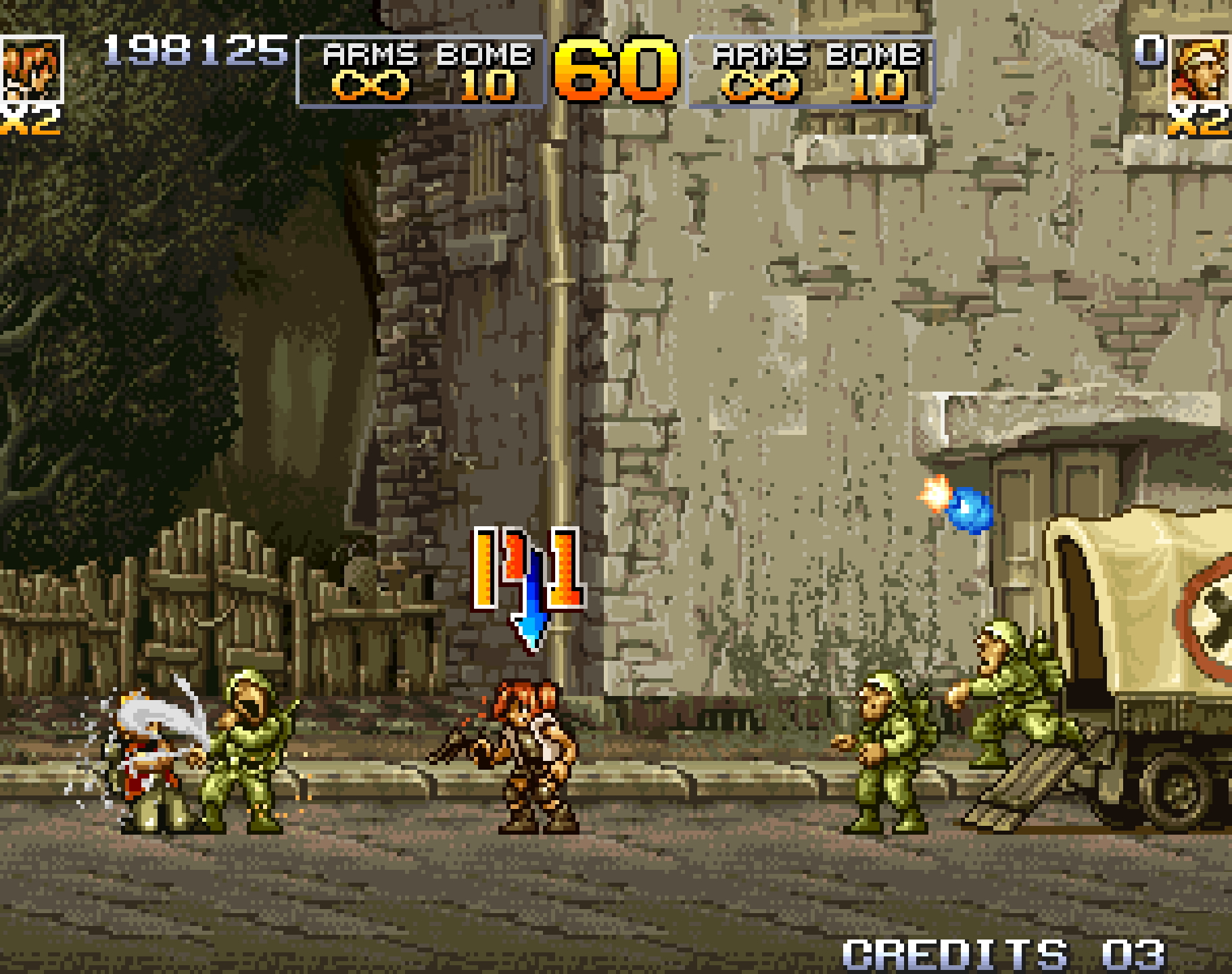
Technical Hurdles and Pixel Solutions
Later games had to work around aging hardware. "We had to reanalyse the whole game and redo the engine," said Mamoto, who inherited legacy code he couldn’t read. Metal Slug 5 was essentially rebuilt from scratch.
Metal Slug Advance, made for the Game Boy Advance, had its own issues: "The challenge was how to optimise the very limited memory specs of the Game Boy," he said. The team rebuilt the game in C++ using NEOGEO tools and even reprogrammed enemy placement to conserve memory.
Despite constraints, Mamoto had one goal: "Make it feel like Metal Slug."
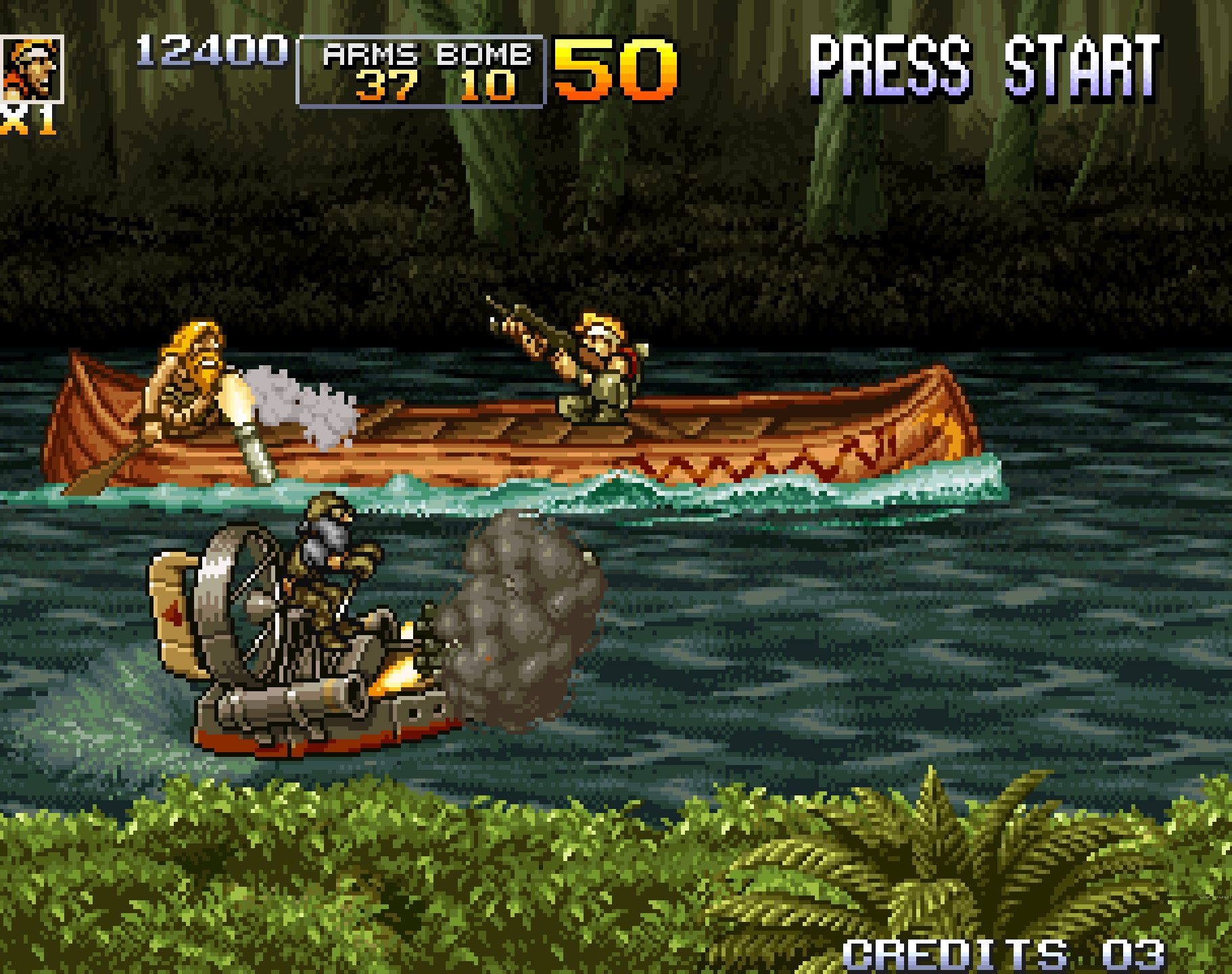
Themes, Humor, and the Anti-War Message
Even amid its comedy, Metal Slug carried deeper ideas. "That anti-war message was the serious side of the game," Mamoto said. "But the relief was all the comedy going on within the game, such as soldiers looking surprised if you crept up on them."
The slapstick animations were carefully planned. Kujo, Meeher, and Akio obsessed over tiny details that made the world feel alive. According to Hiyamuta, even the character screams were intended to give the game "narration that has nothing to do with the player."
"There’s a scene that I really like in Mission 3," said programmer Kurooka, "where the snow level has pieces of snow falling off. I remember working so hard on those fine details."
The Legacy
Metal Slug 7, released in 2008, marked the last mainline title. But the franchise continues to live on through ports, collections, and a loyal fanbase.
"If given the opportunity, I would love to consult on a new Metal Slug game," said Hiyamuta. Mamoto also expressed hope for a revival: "I could make games all the way up to Metal Slug 20."
The Metal Slug franchise stands not only as a series of great games, but as a lasting tribute to the art of 2D action, crafted by hands that once worked in near anonymity. Thanks to these interviews, their names — and stories — can finally be part of that legacy.
Sources & Further Reading
- Metal Slug: The Ultimate History – Bitmap Books, 2020.
Interviews with Kazuma Kujo, Takushi Hiyamuta, Atsushi Kurooka, and Hidenari Mamoto. - Arcade Mania: The Turbo-Charged World of Japan’s Game Centers – Brian Ashcraft, 2008.
A vivid dive into the culture and characters behind Japan’s arcade scene. - The Ultimate History of Video Games – Steven L. Kent, 2001.
A foundational history of the global video game industry from Pong to PlayStation. - Attract Mode: The Rise and Fall of Coin-Op Arcade Games – Jamie Lendino, 2020.
A retrospective on the golden age of arcade games and their technological legacy.
Related Pages
- What Makes an Arcade Game Great? – A deep dive into the design principles behind the most unforgettable cabinets of all time.
- The Complete History of Mortal Kombat Arcade – How a gritty fighter became a pop culture phenomenon.
- Capcom’s 19XX Series: The Complete History – The vertical shooters that defined a generation of arcade firepower.
- The History of Beat ’Em Up Arcade Games – From Double Dragon to Final Fight, here’s how brawlers ruled the late ’80s.
- The Complete History of Space Shooter Arcade Games – The genre that launched arcades into orbit.
